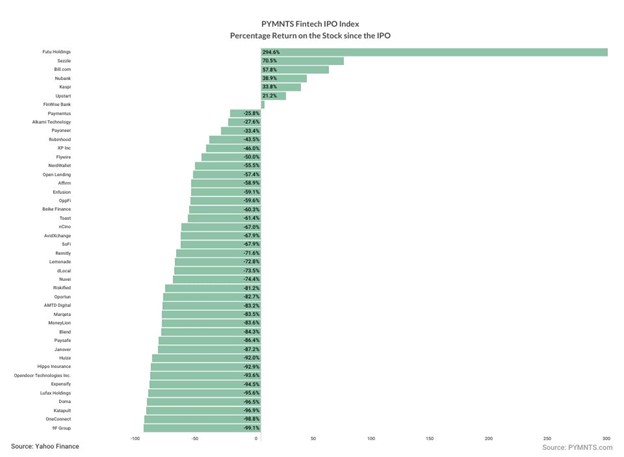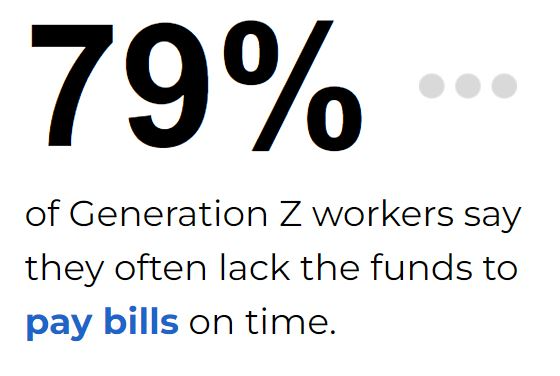The post Lending Platforms Results Mixed Ahead Of Rate Cuts; FinTech IPO Index Slips 3% appeared first on PYMNTS.com.
]]>September stands out as the month that will herald the first rate cut by the Federal Reserve after years of hiking interest rates. At least, that’s what the conventional wisdom says.
For the FinTech IPO Index, specifically for the platforms within that group, lower interest rates should conceivably spur demand for loans and various forms of credit. Conversely, lower interest rates levied on those loans would impact various earnings metrics.
Right now, and as seen in the chart below, only a handful of our names have posted positive returns since their debuts as publicly traded entities.
The impacts of a rate cut — or perhaps even rate cuts, plural — might not be felt for some time, and earnings season won’t be here for another three months. But the platforms, with a spate of partnerships, some corporate finance announcements, and some headlines in the buy now, pay later realm, held sway.
Shares of Katapult sank 17.7% through the past five sessions, followed by Upstart, which lost 15%. In a release late last week, Fibre Federal Credit Union, a Washington-based credit union with over 118,000 members and over $1.6 billion in assets, announced a new partnership with Upstart to provide personal loans to new and existing members. Fibre started on the Upstart Referral Network in December 2022. In the current relationship, qualified personal loan applicants on Upstart.com who meet Fibre Federal’s credit policies will receive tailored offers as they move into Fibre Federal-branded experience to complete the online member application and closing process.
Oportun, which lost 7%, announced the offering of $223.25 million of fixed-rate asset-backed notes secured by a pool of unsecured and secured installment loans.
Sezzle Taps WeBank
The BNPL names helped offset some of the losses that were noted above. Sezzle, as we reported, plans to have WebBank serve as its exclusive bank to originate and finance products offered through the Sezzle platform, including its Pay-in-2 and Pay-in-4 products.
The two companies entered into a strategic partnership program by executing a loan and receivables sale agreement and marketing and servicing agreement last week. Subject to completion of confirmatory testing and procedures, the program is expected to launch in September, according to SEC filings.
Under the agreement, WebBank will also serve as the exclusive issuer of all Sezzle subscription products and of Sezzle card products, per the filing.
Affirm shares stood out here, having helped lead the FinTech IPO Index to higher last week. Earnings late last week noted that in the words of CEO Max Levchin, interest rate cuts might boost demand for BNPL. Shares soared 25%. “The most exciting thing about reductions at that fund rate is we’ll just have more active users, … we’ll have more repeat users, because we’ll be able to approve more people,” Levchin said. Earnings results show that 40% of all Affirm transactions in fiscal year 2024 came from consumers transacting quarterly or more often, a stark increase from just 10% in fiscal year 2021, according to the company’s letter to shareholders. The average transactions per active consumer reached 4.9 in Q4 2024.
Elsewhere, and still within the platform space, Robinhood announced that it now offers stock lending for British customers, part of the platform’s ongoing U.K. expansion. As detailed this week, the offering lets customers lend out any fully paid stock in their portfolio, with Robinhood taking care of finding interested borrowers. This past week, shares slipped 3.5%.
Once shares are loaned out, the company said, customers can use the app dashboard to track earnings, see their positions and enable or disable lending. Stocks are backed by cash collateral at a third-party bank for additional protection, Robinhood added.

The post Lending Platforms Results Mixed Ahead Of Rate Cuts; FinTech IPO Index Slips 3% appeared first on PYMNTS.com.
]]>